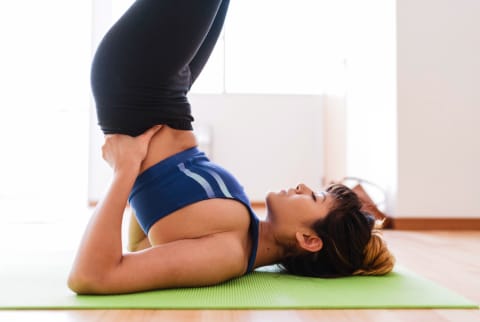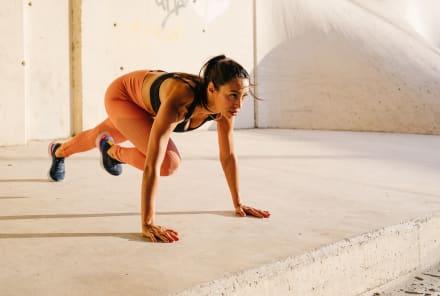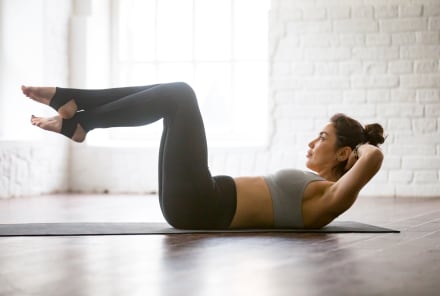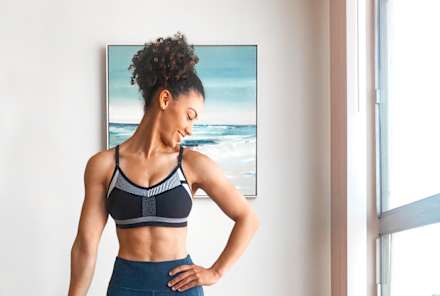Advertisement
What Is The Feldenkrais Method & How Can It Help With Chronic Pain?



If you've ever dealt with chronic pain, you know that there are few things more frustrating than waking up day after day with the same ache, no matter how much physical therapy you're doing or how many yoga classes you're taking. Enter the Feldenkrais Method, a technique created by Israeli engineer Moshe Feldenkrais, designed to help you become more aware of how your body interacts with the world around it.
The idea is that by rewiring neural pathways, your body can learn to move more fluidly and with more ease and stop using small muscles to practice movements and accomplish tasks meant for larger muscles. So how exactly does the Feldenkrais method work, and why is it so effective? Here's what you need to know.
How the Feldenkrais Method works.
Similar to the Alexander Technique, the Feldenkrais Method is done very slowly and gently. Even in slower movement classes like yoga, there are quicker segments of class during which our awareness can leave our bodies if we're not careful (think sweaty sun salutations). The Feldenkrais Method, which is composed of movements like pelvic tilts, hip release exercises using bolsters, and side bends to release the neck. At no point while conducting these exercises should you speed up—movements should be as slow as possible and intentional.
"Getting to know your body better through a host of mindfulness techniques can be very helpful," explains chronic fatigue and fibromyalgia expert Jacob Teitelbaum, M.D. "One of the most important components of chronic pain is myofascial or muscle pain. Our initial instinct is to tighten the muscles to splint them in the face of pain. This helps short-term, but worsens the long-term muscle tightening and pain. Being aware of our muscles and how we hold them, and consciously releasing them can help dramatically."
Using our minds to micromanage our bodies.
According to Cecile Raynor, a Boston-based yoga teacher who specializes in the Alexander Technique, that neck pain you feel after yoga—an exercise designed to release tension, making it all the more frustrating—is likely a result of the negative relationship your mind has with your body. "We live in a disembodied society, where, even at the gym or on the mat, we often use our mind to micromanage our body as if it knew better than our whole-body intelligence. This allows misuse and overuse of our body, which leads to chronic pain or injuries," she explains. "The fact is that tension builds up when we are not in touch with ourselves. So, the Feldenkrais Method and the Alexander Technique are a way to keep in touch with our body; therefore, tension is less likely to build up unknowingly and existing tension can fade away."
Where does your chronic pain come from?
Raynor notes that while the Feldenkrais Method is highly effective, in order for it to stick in the long-term, it's a good idea to understand where your pain comes from in the first place. "It's important to figure out what needs changing so we can stop feeding the discomfort or pain," she notes. "You know that you dealt with the root of the pain, not only when it is gone but when you do not have to stretch the same tension over and over. The fact is that we have unconscious habits that are feeding our conscious habits. For instance, everybody focuses on poor posture. Yet, round shoulders have various reasons for being rounded. It could be locked knees when standing, or a lack of awareness of the balancing spot of the sits bones while sitting. Until they are addressed as part of a whole-body dynamic, no shoulder openers will really fix poor posture."
Interested in outside-the-box fitness techniques? Here's what you need to know about gyrotonics.

Short On Time? Try This Personal Trainer's 5-Minute Full-Body Workout
Krista Stryker, NSCA-CPT

Short On Time? Try This Personal Trainer's 5-Minute Full-Body Workout
Krista Stryker, NSCA-CPT

Short On Time? Try This Personal Trainer's 5-Minute Full-Body Workout
Krista Stryker, NSCA-CPT

Short On Time? Try This Personal Trainer's 5-Minute Full-Body Workout
Krista Stryker, NSCA-CPT









